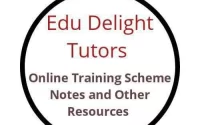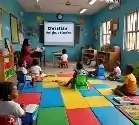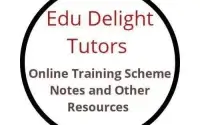Peace Education Social Habits KG Second Term Lesson Notes Week 4
Lesson Plan on Peace Education
Subject: Social Habits
Class: Kindergarten (Age 5)
Term: Second Term
Week: 4
Topic: Peace Education
Sub-topic: Living Peacefully with Others
Duration: 40 Minutes
Behavioral Objectives
By the end of the lesson, pupils should be able to:
- Explain why we need to live in peace with one another.
- Mention ways to live peacefully with people around them, regardless of differences in gender, race, or religion.
- Narrate how they make peace with friends at home, school, and church.
- Act out a playlet on how to settle quarrels.
Keywords
- Peace
- Differences
- Quarrel
- Settle
Set Induction
The teacher sings the song:
“We are children, yes we are,
We love peace, oh yes we do,
Living happily every day,
Let’s make peace today!”
The teacher then asks pupils, “Have you ever helped to stop a fight or made someone happy? How did it feel?”
Entry Behaviour
Pupils are aware that they share spaces with others and understand basic interactions with peers and adults.
Learning Resources and Materials
- Picture charts showing children helping each other.
- Posters of children of different races, genders, and religions.
- Role-play props (e.g., dolls or toys).
- Audio recordings or songs about peace.
Building Background/Connection to Prior Knowledge
The teacher asks pupils to recall a time when they shared their toys or helped a friend and how it made them feel.
Embedded Core Skills
- Creativity and Imagination: Pupils create and act out playlets.
- Communication and Collaboration: Pupils narrate stories and work in groups.
- Digital Literacy: Pupils watch short animations on peaceful living.
Learning Materials
- Music and songs about peace.
- Storybooks about kindness and cooperation.
- Charts of diverse groups of people interacting peacefully.
Reference Books
- Lagos State Scheme of Work for Kindergarten
- Teacher’s Guide for Social Habits
- Web Resources:
Instructional Materials
- Flashcards illustrating peaceful acts.
- Puppets or toys for role-playing.
- Posters showing examples of conflict resolution.
Content
Definition of Peace Education
- Peace: Living happily and calmly with others without fighting or quarrels.
- Peace Education: Learning how to live peacefully with others and resolve differences kindly.
Ways to Live Peacefully with Others
- Show Respect: Treat everyone kindly, no matter their race, religion, or gender.
- Say Sorry: Apologize when you make a mistake.
- Be Patient: Listen to others and wait for your turn.
- Share: Share your toys and things with others.
- Help Each Other: Offer help to friends in need.
Examples of Peaceful Actions
- Apologizing after an argument.
- Sharing toys with classmates.
- Listening quietly during group activities.
- Helping a friend carry their books.
- Saying kind words like “Thank you” or “Excuse me.”
Presentation Steps
- Revision of Previous Topic:
- Teacher revises the previous topic on “My Neighbours/Neighbourhood” by asking pupils to name ways to live peacefully in their neighbourhood.
- Introduction of New Topic:
- Teacher introduces Peace Education by showing a chart of children helping and playing together.
- Teacher explains the meaning of peace and why it is important.
- Student Contributions:
- Pupils share ways they help their friends or settle quarrels.
- Teacher guides corrections where needed.
Teacher’s Activities
- Show posters of children interacting peacefully.
- Discuss with pupils why it is good to live peacefully with others.
- Organize pupils into pairs to act out how to resolve a quarrel.
- Lead pupils in singing the peace song.
- Read a short story about resolving conflicts kindly.
Learners’ Activities
- Listen to the teacher’s explanation.
- Share personal stories about resolving conflicts.
- Participate in group role-play activities.
- Sing along to the peace song.
- Watch an animation about kindness and peaceful living.
Evaluation Questions
Fill-in-the-Blank Questions
- Peace means living _______ with others.
a. Happily
b. Rudely
c. Angrily
d. Quietly - We should say _______ when we hurt someone.
a. Sorry
b. Hello
c. Goodbye
d. Please - Sharing your toys shows you are _______.
a. Selfish
b. Angry
c. Kind
d. Happy - Helping a friend in need is an act of _______.
a. Peace
b. Quarrel
c. Fight
d. Sadness - A place where we learn about peace is called _______.
a. School
b. Market
c. Park
d. Hospital - Respect means treating everyone _______.
a. Kindly
b. Rudely
c. Angrily
d. Silently - When someone waits for their turn, they are being _______.
a. Patient
b. Angry
c. Noisy
d. Sad - Living peacefully means not _______ with others.
a. Fighting
b. Playing
c. Helping
d. Laughing - Helping friends is a way of showing _______.
a. Kindness
b. Anger
c. Fear
d. Sadness - To resolve a quarrel, you should _______.
a. Apologize
b. Fight
c. Ignore
d. Yell
Class Activity Discussion (FAQs)
- What is peace?
- Living happily without fighting.
- Why is peace important?
- It makes everyone happy and safe.
- What do you do after a quarrel?
- Apologize and make peace.
- How can you help a friend?
- By sharing and being kind.
- What should you do if someone is angry with you?
- Say sorry and talk kindly.
- What does respect mean?
- Treating everyone kindly.
- Why should we share?
- Sharing shows kindness and makes others happy.
- What can you say to stop a fight?
- “Let’s talk calmly.”
- How can we make peace in school?
- By helping and listening to friends.
- What are ways to live peacefully?
- Say sorry, share, help, and respect others.
Assessment
- Write one word that means “no fighting.”
- Why is it good to live peacefully?
- Name one way to settle a quarrel.
- What should you do if you make a mistake?
- Write one word that shows kindness.
- Name one thing to say when you hurt someone.
- What does peace mean?
- How do you treat others with respect?
- Name one place you learn about peace.
- Write one peaceful action you can do at school.
Conclusion
The teacher reviews pupils’ answers, provides corrections, and praises their efforts. The class sings the peace song again to reinforce learning.
SEO Elements
- Captivating Title: Teaching Peace Education in Kindergarten
- Focus Keyphrase: Peace Education for Kids
- SEO Title: Engaging Peace Education Lesson Plan for Kindergarten
- Slug: peace-education-kindergarten-lesson
- Meta Description: Discover a fun and interactive lesson on Peace Education for Kindergarten. Includes role-play, songs, and activities to teach peaceful living.
- Civic Education Kindergarten Second Term Lesson Notes
- Back to School and Revision Social Habits KG Second Term Lesson Notes Week 1
- Good Behaviour in Public Places Social Habits KG Second Term Lesson Notes Week 2
Related
Related posts:
- My Neighbours and Neighbourhood Social Habits KG Second Term Lesson Notes Week 3
- National Symbols Social Habits KG Second Term Lesson Notes Week 5
- Nigerian Leaders Social Habits KG Second Term Lesson Notes Week 7
- Second Term Examination Social Habits KG Second Term Lesson Notes Week 12
- Social Habits Kindergarten (KG) Second Term Lesson Notes
Related Posts

Naming Classroom Items (Dida Oruko Nnkan Inu Iyara Ikawe) Kindergarten First Term Lesson Notes Week 3

David and Goliath Christian Religious Studies Kindergarten Second Term Lesson Notes Week 2

Health Habits Kindergarten Age 5 First Term Lesson Notes
About The Author
Edu Delight Tutors
Am a dedicated educator with a passion for learning and a keen interest in technology. I believe that technology can revolutionize education and am committed to creating an online hub of knowledge, inspiration, and growth for both educators and students. Welcome to Edu Delight Tutors, where learning knows no boundaries.